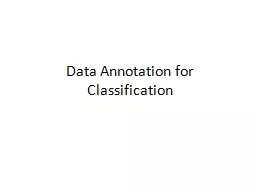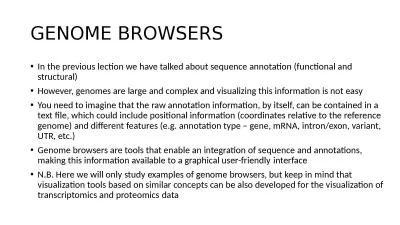PPT-Data Annotation for Classification
Author : debby-jeon | Published Date : 2015-11-30
Prediction Develop a model which can infer a single aspect of the data predicted variable from some combination of other aspects of the data predictor variables
Presentation Embed Code
Download Presentation
Download Presentation The PPT/PDF document "Data Annotation for Classification" is the property of its rightful owner. Permission is granted to download and print the materials on this website for personal, non-commercial use only, and to display it on your personal computer provided you do not modify the materials and that you retain all copyright notices contained in the materials. By downloading content from our website, you accept the terms of this agreement.
Data Annotation for Classification: Transcript
Download Rules Of Document
"Data Annotation for Classification"The content belongs to its owner. You may download and print it for personal use, without modification, and keep all copyright notices. By downloading, you agree to these terms.
Related Documents














